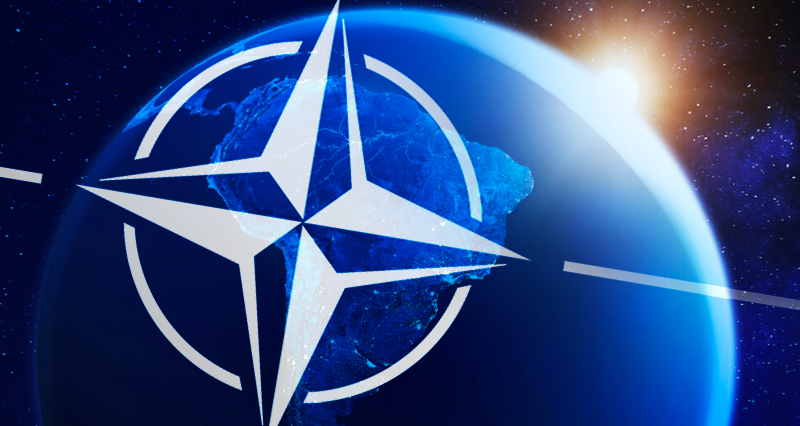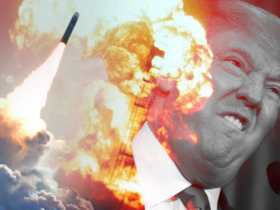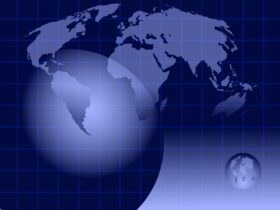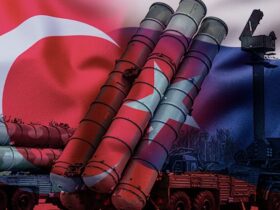In these times, it has become common to speak of the expansion of NATO “towards the east of Europe”, which despite being true, is a limiting description. The truth is that since the end of the bipolar world, the United States, feeling that it owns the world, has used NATO to expand over the entire planet. Proof of this is the signing of the AUKUS Treaty (Australia, the United Kingdom and the United States), the creation of the Quadrilateral Security Dialogue (QUAD) made up of Australia, India, Japan and the United States, and the Five Eyes Intelligence Alliance (consisting of United States, United Kingdom, Canada, New Zealand and Australia as instruments of NATO’s military expansion in Asia and Oceania.
The same is happening in Latin America and the Caribbean, where the United States is beginning an aggressive expansion plan throughout all the latitudes and longitudes of the region. In three articles, we want to provide some information that allows us to confirm the previous assertion.
At the end of last year, the United States had established 12 military bases in Panama, 12 in Puerto Rico, 9 in Colombia, 8 in Peru, 3 in Honduras, 2 in Paraguay. There are also similar facilities in Aruba, Costa Rica, El Salvador, Cuba (Guantánamo), and Peru, among other countries. At the same time the US continues its efforts for the total coverage of the terrestrial and maritime surface of the region.
In Argentine territorial waters and in the Malvinas Islands, which were usurped by the United Kingdom, there is a NATO presence integrated into a system made up of bases on the islands of Ascension, Santa Elena and Tristán da Acuña that “guards” the entire Atlantic from the north to the Antarctic area.
According to a report by the United States Department of Defense – cited by the Venezuelan portal Misión Verdad in May 2022 – the United Kingdom is forming a “triangle of strategic control ” of the southern tip of South America. Meanwhile, nuclear submarines operate south of the Malvinas. In addition, “France and the United States regularly organize joint military maneuvers in the region.”
In recent years, and especially after the arrival of General Laura Richardson as head of the Southern Command of the United States Armed Forces in October 2021, the levels of aggressive intervention by Washington in the region have increased ostensibly. This coincided with the coming to power of Joe Biden who has implemented an active policy of replacing the traditional (and logical) protagonist role of the State Department in diplomatic activity with the dominance of the Pentagon, the National Security Council and even by the CIA. The number of officials from these instances who hold ambassadorial posts in Latin America and the Caribbean is increasing every day more.
The US strategy is aimed at strengthening its presence in the region. In perspective, the South Atlantic has gained particular importance given its proximity to Antarctica, which is regulated by a treaty that expires in 2041, the Amazon, the planet’s main reserve of oxygen and biodiversity, and the triple border where the Guaraní aquifer is located, the largest reservoir of fresh water in the world.
This is the reason behind the US attempts to reinstate the cold war in the region, this time against China and Russia. This logic explains the decision to urge six Latin American countries to donate their Russian military equipment to Ukraine, excluding -of course- Cuba, Nicaragua and Venezuela from this request. Richardson warned that after China, Russia is the number two adversary of the United States in the region, stressing its great strategic value for his country.
The US general has called China an “evil state actor”, after 21 of the 31 countries in the region had adhered to China’s Belt and Road Initiative, at the same time as Beijing’s investment in critical infrastructure such as deep-sea ports, space research or telecommunications with 5G networks and the company Huawei has increased.
Richardson has highlighted the “protective” role that the United States is going to play in the region because being good neighbors involves “caring for each other” which “forces” Washington to take charge of fighting organized crime networks of human trafficking, drug smuggling, unregulated logging and illegal mining. The latter is even more important, “because it is a region rich in resources and rare earths, with the so-called Lithium Triangle that has 60% of world reserves (in Argentina, Bolivia and Chile) a very needed metal for technology”.
In the same way, Richardson has said that the United States is interested in oil (given the large reserves found in Guyana and the largest in the world in Venezuela) as well as copper and gold in the region. It is also a concern of the United States, that oxygen and 31% of the Earth’s fresh water is found in the Amazon. For all this – according to Richardson- should China, which has become the main trading partner of several countries in the region, be kept away.
This logic is inserted in the “integrated deterrence” Strategy of the United States, a renewed modality of the National Security Doctrine that aims to group under the leadership of the Pentagon “all capacities, both civil and military, of governments, companies, civil society and academia of the United States and all its allies”.
At the XV Conference of Defense Ministers of the Americas held in Brazil in July 2022, Defense Secretary Lloyd Austin presented this strategy to his peers in the region. Two months later, in September, Richardson insisted on it speaking to 14 military chiefs at the South American Defense Conference.
The interest of the United States has a regional perspective that is based on the need for its control since 200 years ago, when the Monroe Doctrine was enunciated. But in the global perspective, the Latin American armed forces constitute a combat potential that cannot be underestimated. In 2018, Brazil had 334,000 active military personnel, Colombia 200,000 and Argentina 51,000. NATO has 3.5 million consisting of military and civilian personnel. According to the CELAG think tank, only Brazil and Colombia would contribute more assets to NATO than the European members annexed in the 1990s. In this sense, it is worth making a comparison, considering that, for example, Argentina has assets similar to those of Bulgaria (24.800) and the Czech Republic (25.000) together.
To better understand this whole situation and learn about the intense imperial activity to control the Latin American and Caribbean space, it is worth reviewing the way in which the intervention of the United States and NATO has materialized in some countries of the region:
Paraguay
The Master Plan for the Navigability of the Paraguay River is an initiative of the government of that country to “maximize the use of this waterway”, but it was the United States Ambassador Marc Ostfield who made the announcement. The work is being supported by capital from the United States and will be carried out thanks to the services of the US Army Corps of Engineers, which has generated great concern in Argentina that considers that such a decision will mean control of the territory by foreign forces. Needless to say, the relevance of the area that is part of the Cuenca del Plata, the fifth most important freshwater reserve in the world in extension.
Likewise, Washington does not give up on its longstanding intentions to install a military base on the Triple Border (Argentina-Paraguay-Brazil), with the excuse of fighting international terrorism and drug trafficking. Within this framework, attempts to militarize the region and change the “rules of the game” so that the United States can establish territories under its permanent control are considered extremely dangerous in Argentina. Likewise, some local political leaders have expressed concern that their region is plunged into a logic of confrontation between the United States and China.
Although the Paraguayan government has said that the project includes “cooperation with specialists from the United States” that will include the study of rivers, but that it does not contemplate cooperation of a military nature, the total subordination of Asunción to the United States casts doubt on that assertion. In geopolitical terms, the fact that Paraguay is the only country in South America that does not have relations with China is also considered.
Argentina
From the Argentine perspective, Asunción’s decision to invite the United States’ armed forces to advance the navigability of the Paraguay River is today related to the growing food trade, which, in the context of the war in Ukraine, became strategic.
The purpose of the waterway is to allow deep-draft ships with large volumes of cargo to navigate 365 days a year, rectifying the route and eliminating islands and other obstacles. The presence of specialists from the United States Army gives the project a very different character from what was originally presented as a civil work.
On the other hand, the United States has shown concern because the Argentine State intends to hold a new tender for the dredging of the Paraná River, (which receives water from Paraguay) and some of the companies that will try to win it, are of Chinese origin.
For the United States, the Triple Border between Argentina, Brazil and Paraguay is of paramount importance. The Southern Command stated that it had identified sources of financing for “terrorist organizations” based in Western Asia, mentioning the Lebanese Hezbollah and the Palestinian Hamas. To counteract this supposed threat, a multilateral mechanism called 3+1 was created with the three South American countries and the United States.
Washington has also shown great interest in Argentine Patagonia. Within this framework, on August 8, the United States ambassador to the country attended a meeting with representatives of the most powerful oil corporations in the world in the city of Neuquén (located about 1,140 km southwest of Buenos Aires).
The construction of various facilities was announced on a public property under the direction and financing of the United States Southern Command. Although its embassy in Argentina was quick to report that the works were part of a “humanitarian aid” project whose objective was to improve Neuquén’s response capacity to natural disasters, the Neuquén civil society has rejected such an idea. The project has been characterized by secrecy, the lack of information and the absence of communication regarding what Argentina has obtained in exchange for the cession of said territory in an area that is considered of high strategic value.
The project, characterized as a “camouflaged military base,” according to a report by journalist Ariel Noyola Rodríguez published on the RT portal, is part of a continent-wide strategy that has been characterized as a novel form of military intervention in the region: The program of ‘Humanitarian Assistance and Response to Natural Disasters’, sponsored by the United States Southern Command,
On the other hand, it cannot be ignored in this analysis that part of the Argentine territory is occupied by NATO force. Between 1,500 and 2,000 British military personnel are stationed in the Malvinas, some permanently, as well as state-of-the-art fighter-bomber aircraft
TO BE CONTINUED..

















Leave a Reply